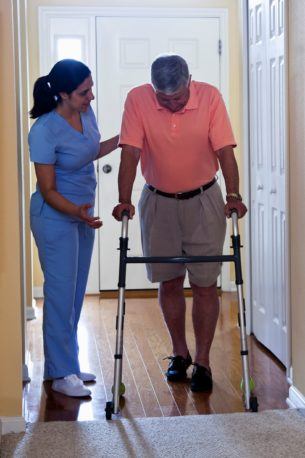 As health care demands increase in the United States because of the growing aging population, there is an increasing need for innovative health care options. Home health care, which provides medical assistance to the ill, elderly, convalescent or disabled in the comfort of their own residence, is one of the fastest growing industries in the country. The Bureau of Labor Statistics projects that employment in this field will grow 55% from 2006 to 2016.
As health care demands increase in the United States because of the growing aging population, there is an increasing need for innovative health care options. Home health care, which provides medical assistance to the ill, elderly, convalescent or disabled in the comfort of their own residence, is one of the fastest growing industries in the country. The Bureau of Labor Statistics projects that employment in this field will grow 55% from 2006 to 2016.
Home health care workers include a variety of occupations, including:
- Nurses
- Home health care aides
- Physical therapists/occupational therapists
- Social workers
- Hospice care workers
Because of the physical demands of the job, these workers face risks and hazards that are unique to the home setting, including a work environment that is not under their control. Some of the most common exposures and sources of injury include musculoskeletal disorders, infectious diseases, bloodborne pathogens, slips and falls, aggressive patient behaviors, and driving.
United Heartland is committed to helping inform home health care workers about the risks and hazards they may face in the course of their work day and how to protect themselves from these exposures. The materials below examine:
- Occupational exposures present in home care settings.
- Safety tips for health care and social service professionals when visiting homes and the communities in which they are located.
- Motor vehicle safety tips for health care workers who are required to drive as part of their job responsibilities.
We encourage you to bookmark this page and share it with others in your organization to review the resources we’ve provided on health and wellness issues. As always, please contact your loss control representative with questions.
Share this resource:
URL coppied to clipboard.
Or send it directly to someone via our email form:


